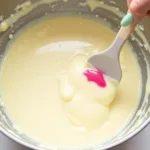Changing canvas color is a fundamental aspect of digital art, design, and even web development. Whether you’re working with physical canvases or digital platforms like graphic design software or online learning management systems (LMS), understanding how to manipulate canvas color is essential for achieving the desired aesthetic and functionality. This article explores various methods for changing canvas colors across different platforms, offering practical guidance and expert insights to help you master this crucial skill. You can find more information on changing specific canvas elements at how to change the color on canvas.
Changing Canvas Color in Graphic Design Software
Most graphic design software, like Photoshop, Illustrator, and GIMP, offers intuitive ways to change canvas color. The process usually involves accessing the “Canvas Size” or “Background Color” options, where you can select a new color using a color picker or by entering specific color values (RGB, HEX, etc.). This allows for a seamless background color change without affecting the elements placed on the canvas.
In Photoshop, for example, you can double-click the background layer to unlock it and then use the paint bucket tool or fill option to change the color. Illustrator offers similar functionality, allowing you to modify the artboard color through its properties panel. Understanding these software-specific tools is key to efficient canvas color management.
Modifying Canvas Color in Web Development
When working with HTML5 canvases, the process of changing the background color is slightly different. You’ll use JavaScript to manipulate the canvas element and its context. The fillStyle property of the canvas context allows you to set the color that will be used when filling shapes or the entire canvas. Using fillRect(), you can then apply this color to the canvas dimensions. This method provides dynamic control over the canvas color, enabling interactive and animated backgrounds. Check out how to change background color in canvas for a more in-depth guide.
const canvas = document.getElementById('myCanvas');
const ctx = canvas.getContext('2d');
ctx.fillStyle = '#FF0000'; // Set color to red
ctx.fillRect(0, 0, canvas.width, canvas.height); // Fill the canvasThis simple script demonstrates how to change the canvas color to red. You can replace ‘#FF0000’ with any valid color value. For a deeper dive into changing colors within canvas elements, how to change color on canvas offers comprehensive information.
How to Change Canvas Color in Learning Management Systems
Several learning management systems (LMS) like Canvas allow users to personalize their dashboards. While changing the core background color might not always be possible due to platform limitations, you can often adjust accent colors and themes to create a more personalized experience. Explore the settings and customization options within your specific LMS to find out how to change canvas dashboard color using the available tools. Learn more about customizing your Canvas dashboard at how to change canvas dashboard color.
Working with Physical Canvases: Priming and Painting
For traditional artists, changing the color of a physical canvas primarily involves applying a new layer of paint or primer. Priming is especially important for creating a smooth and consistent surface for painting. Different primers offer various tints and textures, influencing how subsequent paint layers will appear. Experimenting with different primers and paint colors can greatly impact the final artwork.
Choosing the Right Primer
The choice of primer depends heavily on the desired effect. Acrylic gesso is a common choice for a bright white base, while colored gesso can create a toned ground for specific color palettes.
“A good primer is the foundation of a successful painting,” says renowned artist and color theorist, Amelia Dubois. “It not only affects the color but also the longevity and vibrancy of the artwork.”
Applying Paint Layers
Applying multiple thin layers of paint is generally preferred over thick, single coats. This allows for better color saturation and prevents cracking.
“Building up color gradually allows for greater depth and complexity,” adds Dubois. “It’s like creating a symphony of colors, one layer at a time.” If you’re looking for information on changing specific color elements within a Canvas LMS, you can explore how to change color in canvas.
Conclusion
Changing canvas color is a versatile skill applicable across various digital and traditional art forms. Whether you’re designing a website, creating digital art, or working on a physical canvas, understanding the appropriate techniques allows you to effectively control the visual aspects of your work. By mastering these methods, you can unlock endless creative possibilities and enhance your artistic expression. So, experiment, explore, and discover the power of changing canvas color to bring your vision to life.
FAQ
- What is the easiest way to change canvas color in Photoshop?
- How do I change the canvas background color using JavaScript?
- Can I change the background color of my Canvas LMS dashboard?
- What type of primer should I use for oil painting?
- How many layers of paint are recommended for optimal color saturation?
- How can I change the canvas color in other graphic design software like GIMP?
- Are there any limitations to changing canvas color in web development?
Need more help? Check out these related articles: How to Change the Color on Canvas
Need further assistance? Contact us at Phone Number: 0373298888, Email: [email protected] or visit us at 86 Cầu Giấy, Hanoi. We have a 24/7 customer support team ready to assist you.

